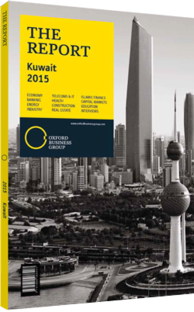Mobile telecommunications
THE COMPANY: Zain Group is a Kuwait-based public shareholding company engaged in the provision of mobile telecoms and data services in eight MENA countries. Zain was incorporated in June 1983 and listed on the Kuwait Stock Exchange in March 1985. The telco currently ranks fifth in terms of market capitalisation in the GCC telecoms sector at KD2.1bn ($7.2bn).
Zain reported a net profit of KD194.3m ($699.4m) in 2014, down 10.2% from KD216.4m ($745.54m) in 2013. This decline was due to a drop in subscribers as competition heated up, resulting in a 2.1% decline in revenues during the same period, from KD1.24bn ($4.27bn) to KD1.21bn ($4.17bn), as well as a higher currency translation impact of KD43.4m ($149.52m) in 2014, compared to KD24.9m ($85.7m) in 2013. As a result of lower revenues and higher operating and administrative expenses, its consolidated EBITDA margin declined significantly from 43.4% to 41.8%.
In terms of regional profitability, Zain Kuwait continues to lead the pack with an EBITDA margin of 48% in 2014. Revenue for the unit rose marginally by 1.9% to KD346.2m ($1.19bn) on the back of higher data revenues, which accounted for 31% of total revenues, an increase of 11% compared to 2013. Revenue growth was also supported by a slightly higher customer base. Zain Kuwait generated the highest average revenue per user (ARPU) at $36 in 2014 despite falling by as much as 7.7% from an ARPU of 39% in 2013.
In terms of market share, the Kuwait unit continued to add new customers, recording a total of 2.7m, although, on a relative basis, Zain Kuwait’s market share declined steeply from 39% in 2013 to 35% in 2014. The market in Kuwait continues to remain extremely competitive with overall telecoms penetration at 221% by the end of 2014, the highest rate as compared to all the other markets in which Zain operates.
ASSOCIATED FIRM: Zain Iraq, the group’s largest contributor, reported an 8% decline in revenues to KD455m ($1.57bn) in 2014. The drop was primarily due to political instability in the country, with these issues also affecting Zain’s customer base in Iraq, which decreased by 13.3% to 13.8m in 2014.
Nevertheless, despite the decline in its customer base, Zain Iraq continues to hold a leading position in the country, which has a penetration rate of 91%. In a positive development, in November 2014 Zain Iraq successfully entered into an agreement with Iraq’s telecoms regulator to utilise 3G spectrum in the country, with a total spectrum fee of $307m.
Zain continues to book losses from its associated companies, an eight-year trend since 2007. In 2014 Zain booked KD34.1m ($117.5m) in losses from associates, a slight decline from KD36.2m ($124.7m) in 2013 mainly due to losses reported by Zain KSA. In Saudi Arabia Zain is expanding its customer base, totalling 9.01m at the end of 2014, an increase of 7% over 2013. The unit also recorded an improving EBITDA margin at 17% in 2014, as compared to 13% in 2013. Zain KSA reported a loss of SR1.3bn ($346.45m) during 2014. This required the company to undertake a second round of capital reduction that was approved by the shareholders in the first quarter of 2015. On the positive side, the company saw lower than expected losses of SR257m ($68.5m) during the first quarter of 2014.
Zain continues to register healthy returns to shareholders, although at a slightly declining trend, with return on average equity recorded at 12% in 2014, compared to 13.5% in 2013 and 13.7% in 2012.
DEVELOPMENT STRATEGY: Zain remains one of the leading telecoms operators in the region and has maintained relatively stable profitability since 2005, with a diversified operating base. With a mature local market in Kuwait, Zain has been focusing on increasing data revenues, in line with sectoral trends. Zain Iraq is expected to be the primary driver of future growth. Zain has been successful in Iraq, as highlighted by its leading market share and the spectrum win that would help it to expand its revenue and profitability. The announcement of a Zain Iraq initial public offering should also provide liquidity to expand its footprint in the country.
You have reached the limit of premium articles you can view for free.
Choose from the options below to purchase print or digital editions of our Reports. You can also purchase a website subscription giving you unlimited access to all of our Reports online for 12 months.
If you have already purchased this Report or have a website subscription, please login to continue.

